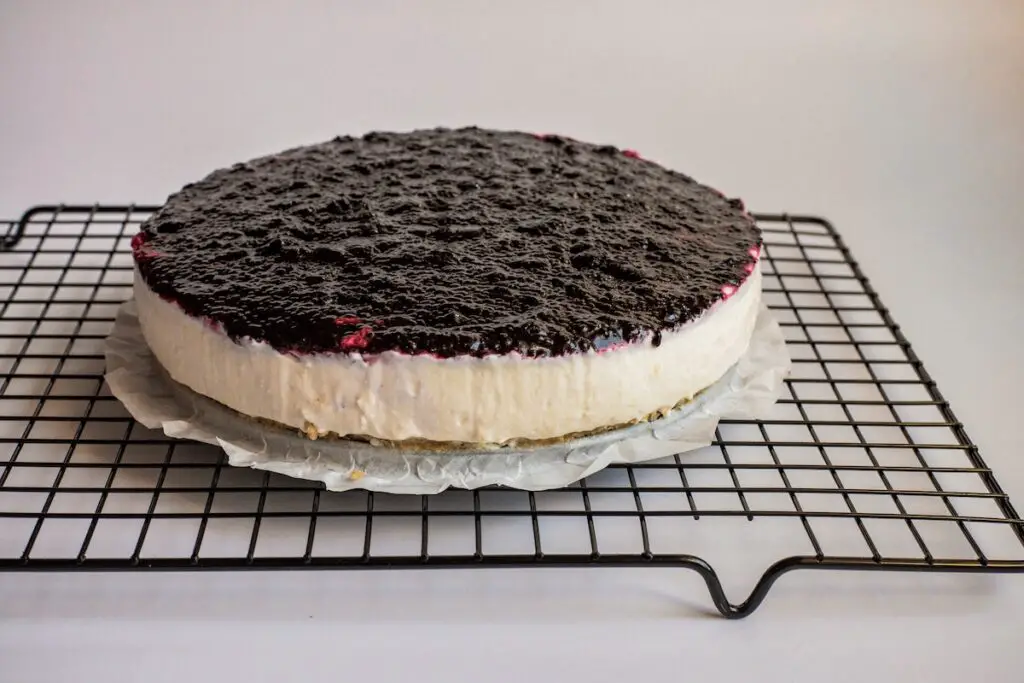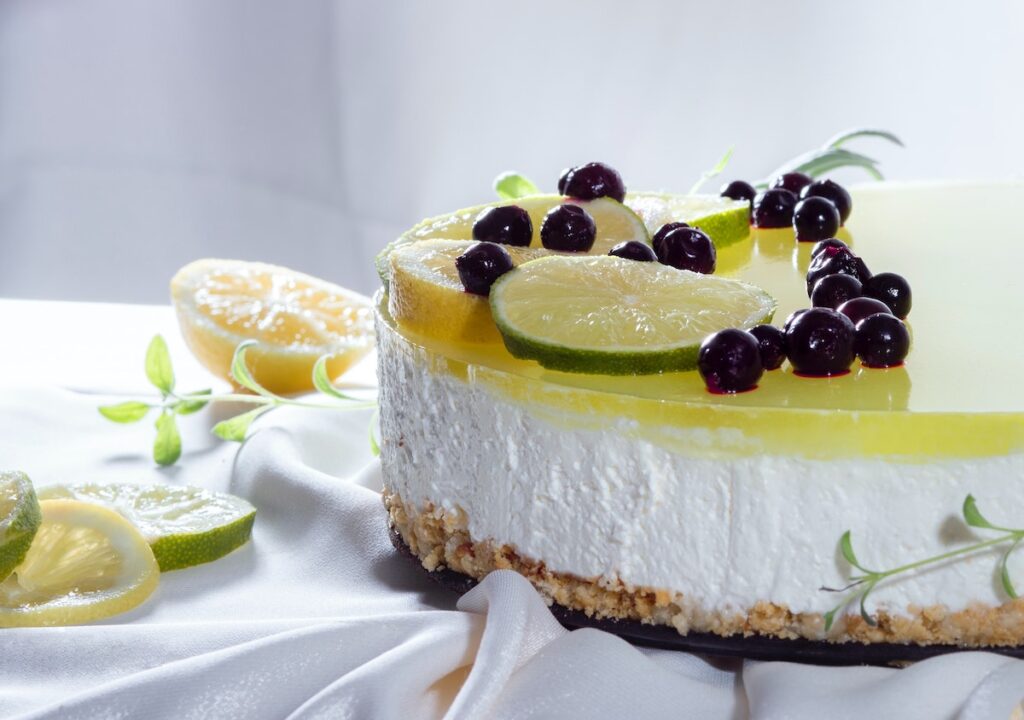Nominated-Day or Next-Day
Nominated-Day or Next-Day

Learn how to fix lumpy cheesecake batter by gently warming the batter, mixing it gently or sieving it. This helps salvage broken or curdled cheesecake batter and melting cream cheese lumps. Cold ingredients are often the cause of lumpy cheesecake batter.
As an experienced pastry chef, I have a deep understanding of the art of baking and the science behind cheesecake batter.
Read on to discover great tricks to smooth out crumbly or lumpy cheesecake batter!
For a long time, we considered cheesecake a mystical recipe, and that the secrets behind this delicious dessert are only known to professional pastry chefs!
However, in reality, cheesecake isn’t that hard to prepare at home. You don’t require any special equipment or methods.
There are a variety of choices for cheesecakes, however, we’ll concentrate on the traditional baked cheesecake.
If you’re making a non-bake cake or New York cheesecake, keep following because these suggestions are applicable to you too!

A classic cheesecake is made up of an underlying layer of cookies crumbs and a popular choice for many is the famous Graham cracker.
The foundation layer bakes in an oven to make the sweet, crispy layer on the bottom of the cheesecake.
On top of this is a layer of amazingly rich, creamy, and smooth cheesecake. It is created by mixing the batter together, and baking it in the oven.
Making this cheesecake batter could be difficult for some, however, once you’ve got the process perfected, you’ll be able to make this recipe effortlessly.
A simple cheesecake batter recipe typically consists of cream cheese, sour-cream, and eggs.
Mix it until it's a semi-liquid, super-smooth batter, which can be drizzled onto the graham cracker’s base.
The cheesecake is slowly baked in the oven. Use a hot water bath to generate moisture and steam. Allow to cool and eat.
Resolving lumpy cheesecake batter isn’t easy. I can’t promise that you’ll turn your lumpy batter into a velvet, silk mixture, but, let’s give it a go!
Firstly, don't over-whisk the batter as this can cause more problems and make the batter even lumpier.
Here are a few of the most effective ways to repair the problem of lumpy batter.
This is an excellent method to repair crumbly cheesecake batters that have formed due to ingredients too cold. This will melt any pieces of cream cheese so they blend seamlessly with the other ingredients.
You can either pour the mixture into a pot at a low temperature or put it in a bowl over warm water. Stir continuously until all the cream cheese lumps are melted, and the mixture is completely smooth.
It is also a good method to fix cheesecake batters that are curdled or split.
Unfortunately, the batter that you have saved may not have the setting characteristics you’d like. If it is baked and chilled, it’s likely to be more reminiscent of a mousse than cheesecake.
If this happens, it’s not all lost. You can simply put it into the freezer and serve it up as an ice cream dessert.
This is a great technique when you’re faced with chunky cheesecake batter that isn’t curdled or split.
Pour the batter through the sieve which will remove any lumps of cream cheese or sugar clumps that were not broken down in the mixing process.
It is possible to use an ice cube to force the pieces through the sieve. Just try it!
The batter should be gently mixed into the remaining batter. Be careful not to overmix because you’ll be moving from one lumpy situation to the next!
We recommend caution in this situation, so you don’t worsen the issue.
Mixing too much is the main reason the cheesecake batter became lumpy initially. Don’t be enticed to mix split or curdled batter or the problem will get worse.
If the cheesecake batter is smooth with sugar clumps and cream cheese, a little additional mixing could help.
To prevent overmixing, switch to a hand-held whisk or an old-fashioned spoon.
If you’re looking at crumbly cheesecake batter, the most obvious suspect is the cream cheese. The objective is to allow it to blend easily along with other components. If that isn’t the case, you’ll have a lumpy batter.
This issue will likely occur if your cream cheese is too cold--it won’t blend well with the other ingredients.
A lumpy batter may result from adding other cool ingredients to the cream cheese. This causes it to firm up, resulting in lumps.
Small pieces of cream cheese inside the batter don’t pose a huge problem, as long as the rest remains smooth. After the cheesecake has been baked, you’ll be unable to tell the lumps existed.
The more serious issue is a lumpy cheesecake batter that’s divided or curdled.
So what's the reason for this?
It is also possible that it is possible that the temperature of the ingredients can cause problems, especially if you’re using double cream.
You have to find a balance between the cream cheese is soft and warm enough that it blends, but not too warm that it splits and curdles.
The nature of the ingredients used can also be an element. It is important to note that the cream cheese used to make cheesecakes must have a high-fat content. Do not attempt to change to a less fat-laden one, as it won’t work.
There isn’t a set time for when the cheesecake mixture must be mixed since it is dependent on the temperature and type of ingredients.
Cheesecake batter that’s not properly mixed will look similar to softly whipped cream.
If you are making a cheesecake batter that contain sugar, you must sift it thoroughly.
Sugar that has clumped together will cause lumps in the cheesecake batter.
Ensure you fold in eggs slowly and cautiously. If you add them too fast, they can create a wet and sloppy batter that is difficult to mix with the cream cheese.
The batter that is lumpy and clumpy for cheesecakes isn’t easily fixed. So let’s take a look at how we can prevent it from ever happening at all!
The most important step you can take is to ensure that all your ingredients are in good condition before you begin. This involves removing them from the refrigerator and putting them on the kitchen counter at least two hours before prep.
Another tip is to beat the sugar and cream cheese mixture thoroughly until it’s soft and smooth.

Mix in liquid ingredients like cream or eggs very slowly. Eggs must be whisked gently before adding cream. If you mix the liquid ingredients in one go, a lumpy batter will likely form.
Also, pay close attention to the mixing. Do not pour the batter into the mixer and then walk away, as this recipe is guaranteed to curdle or split. Use an electric mixer in brief bursts or better yet, mix by hand.
The goal is to create a batter that is rich, creamy, and smooth.
If you do succeed, congrats! You’ve learned one of the secrets to making lump-free cheesecake!
If your cheesecake batter is lumpy, it can result in a less smooth and creamy texture in the final product.
To get lumps out of the cream cheese mix, you can gently warm the batter, sieve it, and properly mix it.
If you overmix cheesecake batter, it can cause the batter to become overworked and result in a dense, tough texture in the final product.
Cream cheese may become lumpy in cheesecake if it is not properly creamed with the sugar, if it is added too quickly, or if the batter is overmixed.
Leave a comment